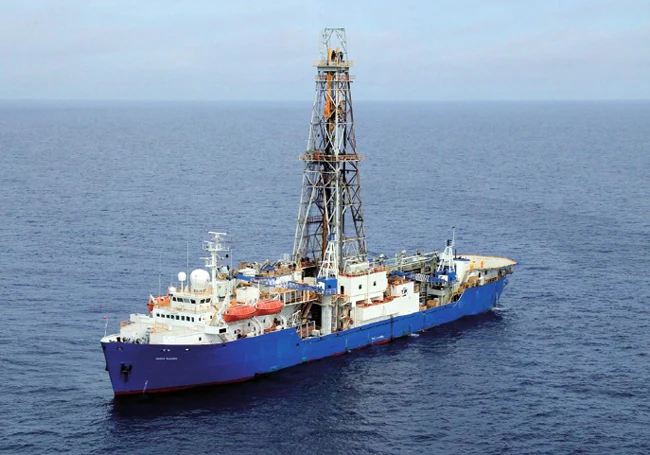

Sections
Highlight

In the early hours of this Friday morning, many Costa del Sol residents noticed the presence of a large structure in the sea off the coast of Malaga. It was visible from high altitudes behind the city, such as the Gibralfaro, the hills of El Palo, Cerrado de Calderón, El Limonar and Los Montes, and along the coastal motorway and high areas of Benalmádena and Fuengirola, such as El Higuerón. Moreover, what was strange was that it seemed to be leaving a line of flat smoke on the horizon.
The jokes were not long in coming in. Several sources consulted during the enquiries of this newspaper joked that it is "the tower of the Qataris [the controversial hotel planned for the port of Malaga] that is already on its way".
So what is it? SUR has contacted the main maritime institutions, such as the port authority and the harbour master's office. Well, it is indeed a ship, but a very special one. Moreover, finding it has not been easy, as it is like looking for a needle in a haystack with the tools for locating ships at sea (such as MarineTraffic or Vessel Finder).

However the vessel has finally been located, and on Friday lunchtime was off the coast of Fuengirola. It is a very special ship, and in fact its manoeuvres are restricted, according to port sources. It is called Joides Resolution, is 143 metres long and 21 metres wide, and was built in 1978. But what makes it particularly striking (and visible despite the distance at which it sails) is its large 62-metre-high metal-framed tower, which supports drilling machinery. Its destination is a point off the coast of the southern half of Portugal.
And what is it for? The Joides Resolution (or JR) is a scientific research vessel for investigating the depths beneath the seabed. In fact, its powerful drilling system is capable of reaching up to 8,235 metres below the seabed. Its purpose is to extract samples and collect measurements to help scientists study the earth's development, according to its website.
In fact, the site where it is heading, U1385, was already drilled in 2022, but researchers were only able to reach a depth of 400 metres. The current expedition (401) could go deeper to extend its climatic records to older geological periods, according to data provided by the institution itself.
"JR ocean borehole data provide a scientific means to understand climate and environmental change throughout an important part of our planet's history, a research topic often referred to as Earth's paleoclimate," said the institution. "The JR core samples are the smoking gun when it comes to assessing many historical events related to palaeoclimate, solid earth changes and more, such as the extinction of the dinosaurs and plate tectonics, for example."
The research vessel is named after the HMS Resolution, commanded by Captain James Cook more than 200 years ago, which explored the Pacific Ocean, its islands and the Antarctic region. JOIDES is the acronym for 'Joint Oceanographic Institutions for Deep Earth Sampling', representing the original partnership of universities seeking to explore the geology beneath the ocean floor. Today, the ship is used by scientists from hundreds of universities around the world. The crew usually consists of about 50 scientists and technicians and 65 crew members.
Since 2013, it has been serving the International Ocean Discovery Programme and is managed by the JOIDES Resolution Science Operator (JRSO) at Texas A&M University, through funding from the US National Science Foundation.
Publicidad
Publicidad
Publicidad
Publicidad
Esta funcionalidad es exclusiva para registrados.
Reporta un error en esta noticia

Debido a un error no hemos podido dar de alta tu suscripción.
Por favor, ponte en contacto con Atención al Cliente.

¡Bienvenido a SURINENGLISH!

Tu suscripción con Google se ha realizado correctamente, pero ya tenías otra suscripción activa en SURINENGLISH.
Déjanos tus datos y nos pondremos en contacto contigo para analizar tu caso

¡Tu suscripción con Google se ha realizado correctamente!
La compra se ha asociado al siguiente email
Comentar es una ventaja exclusiva para registrados
¿Ya eres registrado?
Inicia sesiónNecesitas ser suscriptor para poder votar.